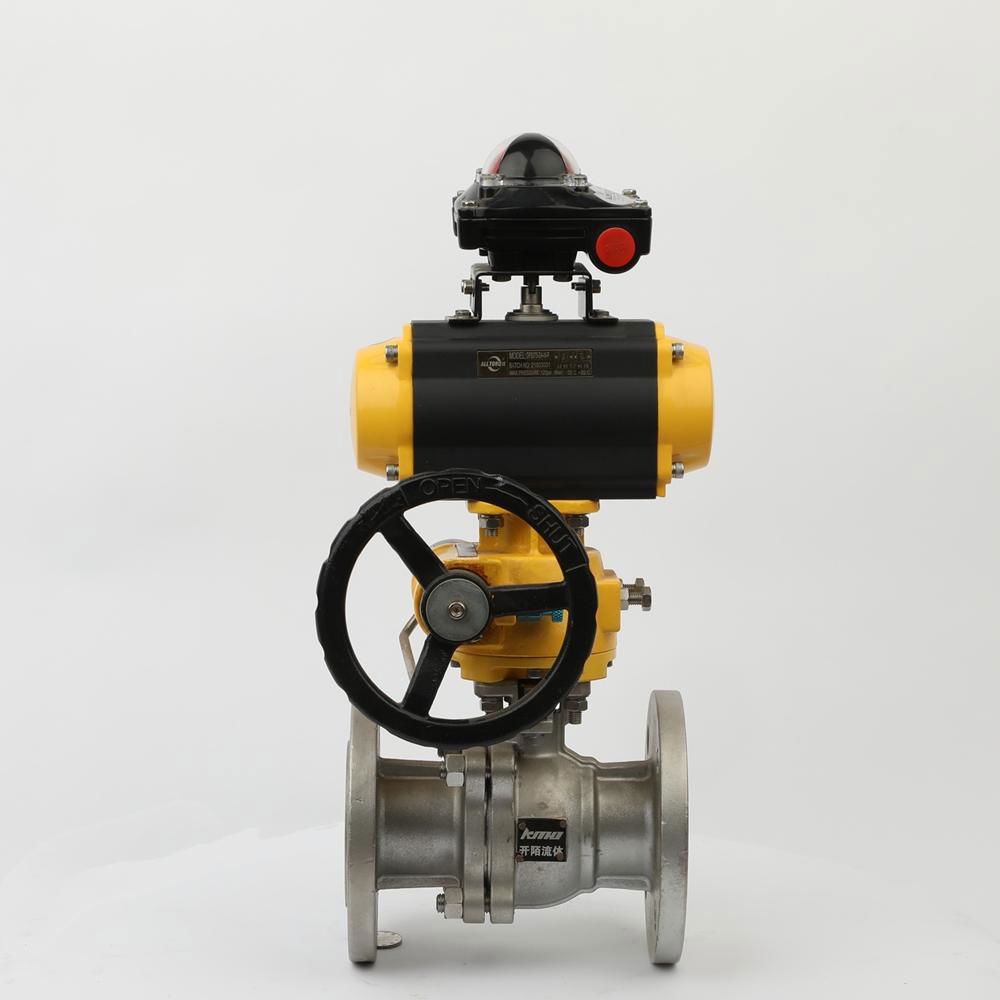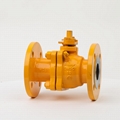DN15-DN200 Fange Ends Pneumatic Floating Ball Valve for Gas
Product Description
Product Introduction
The KQ641F pneumatic floating ball valve is a valve perpendicular to the channel 90 degrees. It is composed of a piston-type double-acting or single-acting pneumatic actuator and a ball valve structure. The accessories are solenoid valve, air filter, limit switch. It can automatically adjust the control or two-position cut-off control of the fluid medium in the industrial pipeline.
Pneumatic ball valve is composed of actuator and ball valve. The execution speed of pneumatic actuators is relatively fast, so it is usually also called pneumatic quick cut-off ball valve. Pneumatic ball valves are usually equipped with various accessories, such as solenoid valves, air source treatment triplets, limit switches, positioners, control boxes, etc., to control or remotely control the valve. People can open and close of the valve in the control room, which is convenient and reduces more cost.
The pneumatic ball valve only needs to use a pneumatic actuator to drive the valve to rotate 90 degrees, and can meet the function of cutting off and opening the flow of the medium. And It only needs a small turning torque to close tightly. The straight inner cavity of the valve provides a direct flow path with little resistance for the medium. It is generally considered that the ball valve is most suitable for direct opening and closing. The main feature of the ball valve is its compact structure, easy to operate and maintain, suitable for general working media such as water, solvents, acids and natural gas, but also for media with harsh working conditions.
- Body Material: WCB(more details please check the follow drawing)
- Surface material: Carbon steel: epoxy resin
- Applicable medium: gas
- Type: floating ball valve
- Drive mode: pneumatic
- Diameter: DN15-200mm
- Nominal Pressure: 1.6-64MPa
- Design temperature:-29ºC~ +121ºC
- Connection type: flange
- Design Standard: GB/T12237-2007
- Structure&Length Standard: GB/T12221-2005
- Flange Standard: GB /JB / HG / DIN
Installation&Maintenance
- The ball valve has been tested for various performances such as strength, sealing, and switching according to the "valve inspection and test" standard before leaving the factory, so as to meet the requirements of the standard, and remove the oil and debris inside and outside the valve cavity. Both ends are sealed with caps.
- Before installation, the user should check carefully whether the content of the nameplate is in accordance with the conditions of use. It is not allow to install and use the valve with over pressure and over temperature grade.
- Before installation, KMO recommends that the caps at both ends of the inlet and outlet should be removed, and check carefully whether there is dirt adhering in the valve cavity. At the same time, checking whether the bolts, nuts and packing glands of the connection parts of the valve are loose. If they are loose, they should be tightened.
- Connect the ball valve to the pipeline according to the designed connection method. After fixing, the valve should not withstand large tensile, compression, bending and twisting stresses to avoid damage to the valve.
- The transmission mode of the ball valve includes manual, worm gear transmission, pneumatic, electric, hydraulic and other driving methods. Wrench (or handle) is used for manual operation. Pneumatic, electric, hydraulic, etc. are installed corresponding drive devices above the ball valve. Please refer to the drive device manual for specific matters.
- The wrench (handle) can be turned 90° to open and close the ball valve. Turn the valve stem clockwise to close the valve and turn counterclockwise to open the valve.
- For manual ball valves, the top of the valve stem has a groove indicating opening and closing, and the top of the ball valve also has a limit mechanism indicating the opening and closing state. When the wrench (handle) and the groove are in line with the pipeline, the ball valve is in the open state. Conversely, when the wrench (handle) and the groove are perpendicular to the pipeline, the ball valve is in the closed state.
- The ball valve should be stored in a dry and ventilated place, and outdoor storage is not allowed. Channels at both ends are blocked with heads to prevent debris from entering.
- During storage, the ball valve should be fully open to protect the ball sealing surface and the valve seat sealing surface.
- If the ball valve is in a status of long-term storage, it should be regularly checked to remove the dirt in the inner cavity and grease the processing surface.
- If the ball valve is installed in the pipeline, it should be checked regularly to make sure everything is normal. If there is any problem, you need to repair it immediately.
- When the ball valve used is disassembled and reassembled, KMO reminds that it must be inspected and tested in strict accordance with the relevant national standards and issued with a certificate before it can be used again.
- When there is medium pressure in the ball valve, it is strictly forbidden to replace or add packing, and it is strictly forbidden to disassemble any parts on the valve and loosen any strong parts, otherwise it may cause an accident.
- The storage, use, maintenance and troubleshooting of valves shall be recorded in detail.
- It is not allow to weld, maintain or place parts under the state of valve under pressure.
Product Image

Img 1

Img 2

Img 3

Img 4

Img 5
Send Inquiry to this Member
Related Products of this Company
This member assumes full responsibility for the content of this listing. DIYTrade accepts no responsibility whatsoever in respect of such content.
To report fraudulent or illegal content, please
click here.
China Suppliers Quick Searching:
,








